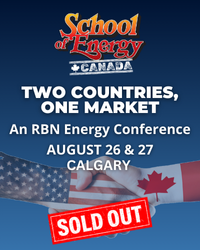As natural gas takes on an ever-expanding role in Asian energy markets, the traditional practice of sourcing liquefied natural gas (LNG) through long-term, “point-to-point” supply deals at oil-indexed prices is being challenged on several fronts. For one, U.S. exporters are linking the price of their LNG to Henry Hub gas prices. For another, Asian LNG customers, eager to reduce costs in a suddenly glutted LNG market, are working to renegotiate their oil-linked deals, and turning to the LNG spot market, where prices have been attractively low. Fast-changing market dynamics include planned gas pipelines from Siberia to China that may well make the Asian LNG market more like Europe, where LNG competes head-to-head with piped-in gas and with coal. Today, we continue our look at the changing international market and what it means for U.S. and Canadian gas producers and LNG exports.
The future success of U.S. and Canadian shale producers exporting their gas in the form of liquefied natural gas (LNG) depends primarily on how competitive they can be on price. There are reasons to be optimistic, especially over the long term. After all, the U.S. and Canada have vast reserves of low-cost, accessible gas; good access to the three key markets (Asia, Europe and South America); and outstanding reputations as reliable trading partners. But there’ll be a lot of competition out there—from LNG exporters in Qatar and Australia, and from Siberian gas producers, to name just three. LNG also will need to compete with other forms of energy. For example, while China, India and other Asia nations (Japan among them) may want to shift from coal to gas as a primary power-generation fuel for the sake of public health and the environment, how much they’ll actually shift (and how much gas they’ll end up needing) will depend to a large degree on whether gas is an economically viable alternative. What seems clear is that they want it to be, and that they’re doing everything they can to keep gas and LNG prices low and to reduce the price volatility that sometimes can be pretty scary. As we’ll get to in moment, that includes supporting an emerging spot market for low-priced LNG, working to renegotiate oil-indexed deals, developing alliances and buyers clubs, and reaching deals to pipe in gas from Siberia and other neighbors or near-neighbors. All that is making the Asian market for gas and LNG look a little more European—again, more on that in a bit.
State of the Energy Markets
What is going on in today’s markets for natural gas, NGLs and crude oil, why it is happening, and what is likely to happen next?
July 23rd, 2015 New York City
Our tour of this “whole new world” of LNG started in Episode 1 with a look at how the market for LNG evolved gradually over the last 50-odd years, and how it remains dominated (at least in Asia, but elsewhere too) by long-term LNG supply deals. In Episode 2 we ran through the major catalysts shaking up the LNG trade (they include more LNG capacity coming online; LNG export deals with fixed liquefaction tolls and gas costs linked to U.S. spot market prices at Henry Hub, LA; the oil-price decline and its effect on oil-indexed LNG prices; the roll-off of long-term LNG supply deals; the increasing share of LNG capacity available to the spot market; the recent slump in Asian LNG demand-and prices that have occasionally made Western Europe a more attractive market for spot LNG sales). Then we looked at existing and future demand in key Asian markets, starting with emerging LNG importing giants China and India (Episode 3) and then continuing with current leaders Japan and Korea (Episode 4) and with the rest of the Asian pack (Thailand, Singapore, the Philippines, Vietnam etc.; Episode 5), all of which plan to ramp up their LNG imports.
Join Backstage Pass to Read Full Article






